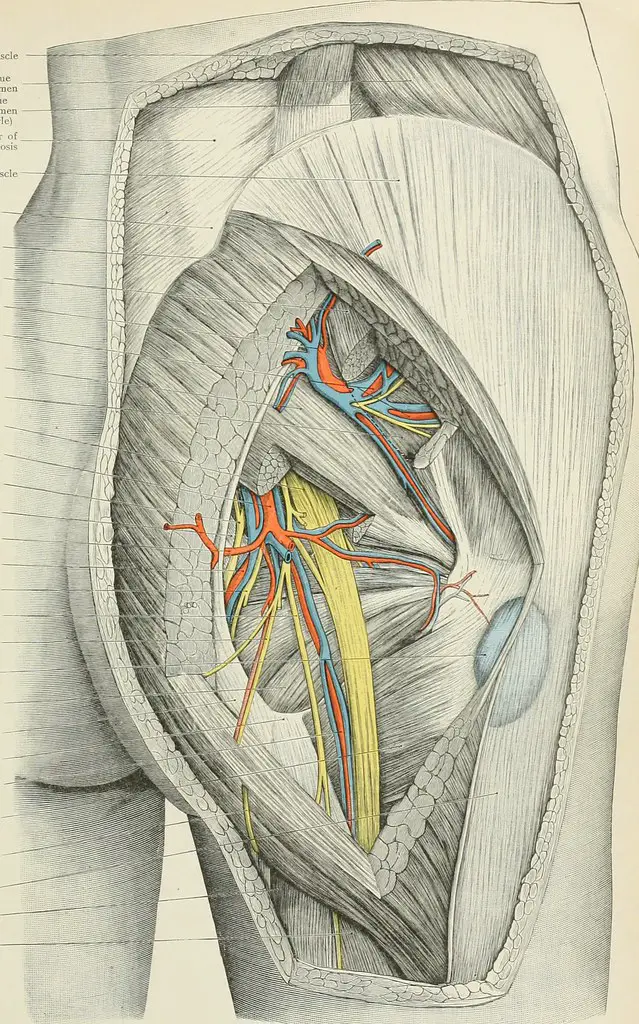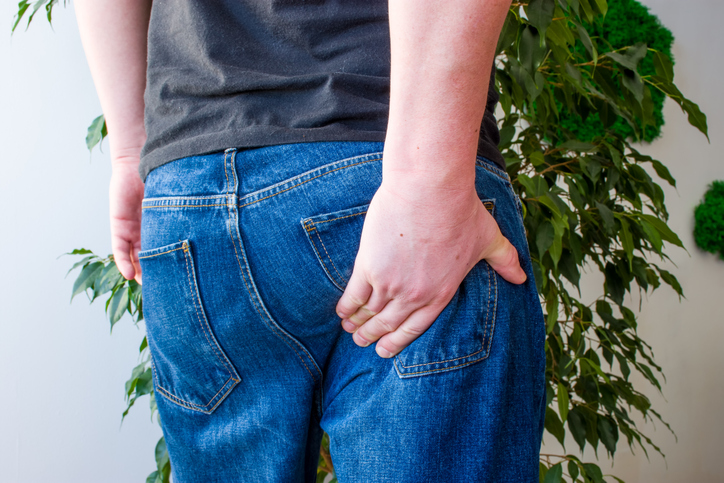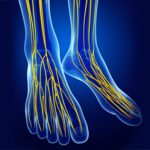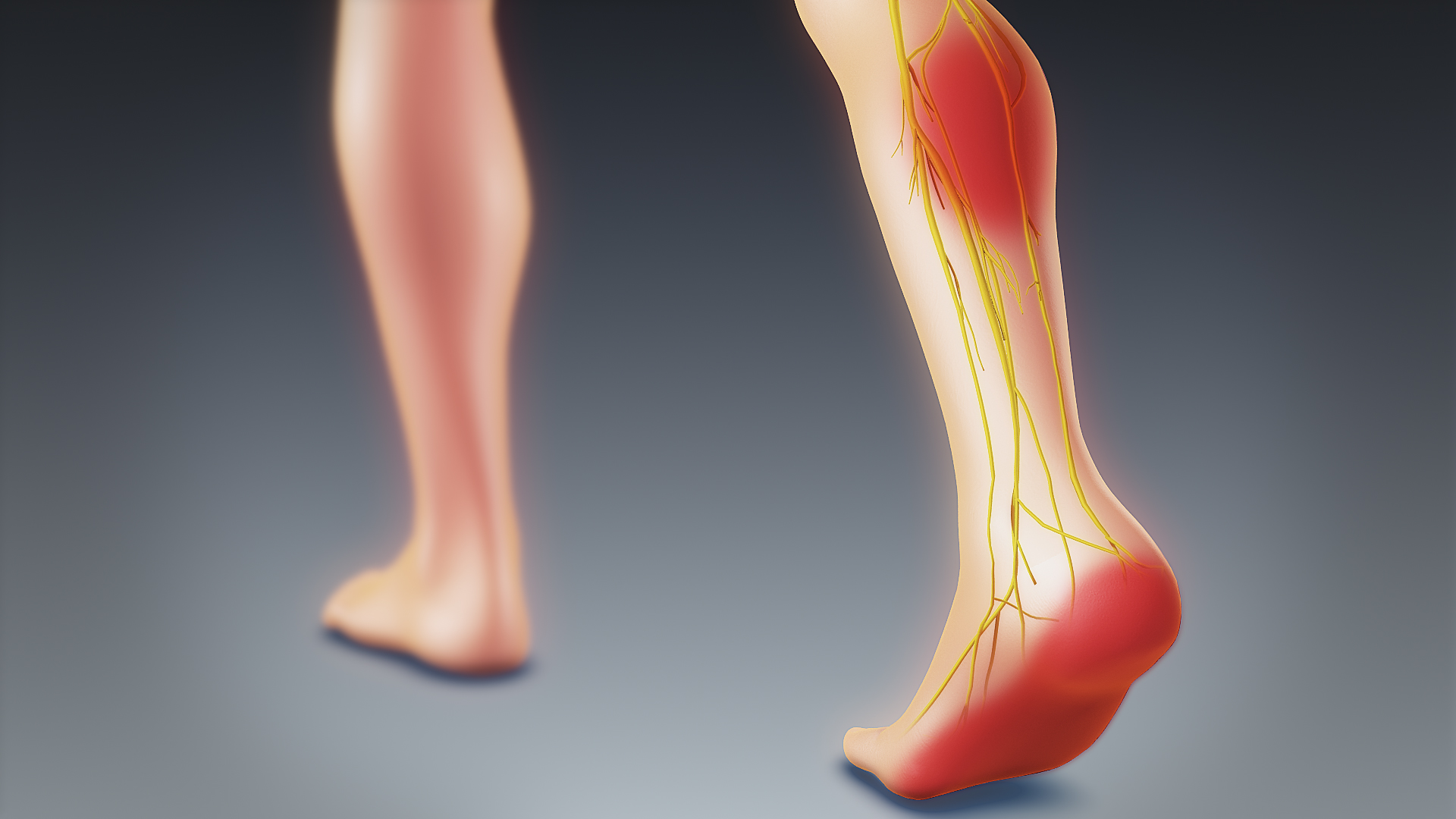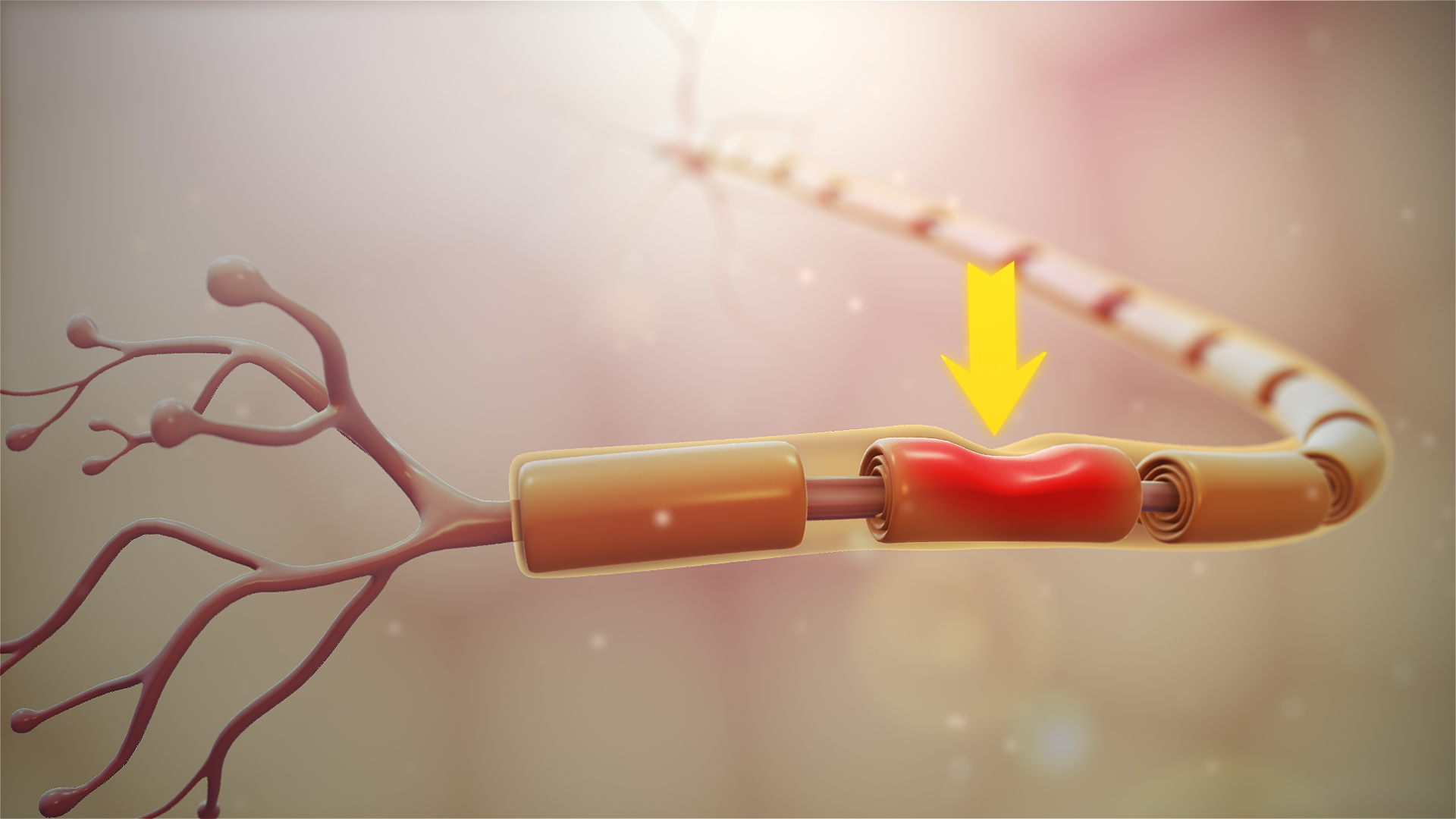La sciatica manifested by pain radiating to the leg. Most often, they are particularly uncomfortable in the buttocks.
How to explain the appearance of these incapacitating pains? How to treat them? This article will help you discover the appropriate ways to relieve the symptoms of sciatica in the buttocks (Be careful, the treatment will not be limited to this region only!).
Definition and anatomy
Le sciatic nerve is a mixed nerve. They consist of both motor fibers (responsible for the movement of certain muscles in the leg) and sensory fibers (responsible for the sensations of the rear and outer part of the leg, and the whole of the foot).
Le sciatic nerve is the longest and most voluminous nerve in the body.
On each side of the lower limbs, the sciatic nerve roots originate in the lower back. Once the plexus is formed, it then moves through the pelvis, buttock, to reach the thigh. It should be noted that the sciatic nerve is very close to the piriformis muscle at the level of the buttock, and that it even passes through its muscle fibers in some people.
For more detail, click here.
The term " sciatica is commonly used to describe any pain, motor disturbances, and sensory disturbances that appear on the path areas of the sciatic nerve.
Symptoms can be felt anywhere along the path of the sciatic nerve: in the lower back, in the hip, in the buttock, along the leg, in the foot and even to the toes.
People describe sciatic pain in different ways. Some people speak of sharp, throbbing pain. Others, on the other hand, speak of sensations such as burning, electric shock or stabbing.
If you want to know everything about this condition, go to this page.
The causes of sciatic pain
La sciatica is usually the consequence of irritation, inflammation, pinching or compression of one or a few spinal nerves in the lumbar region.
Several factors can come into play in the occurrence of sciatica.
- Hip trauma
- Piriformis syndrome (pain in the buttocks).
- Vertebral compaction (fracture of the spine).
- Herniated disc
- Lumbar osteoarthritis
- Narrow lumbar canal
- Spondylolisthesis
- Wrong drug injection
- Etc
Among these many probable causes, the herniated disc is the most common cause of sciatica. The discs are the damping pads between each vertebrate of the spine.
The pressure of vertebrae can cause the center of a gel-like disc to bulge (herniate) through a weakness in its outer wall. When a herniated disc affects a vertebra in the lower back, it can irritate the sciatic nerve.
Symptoms of sciatica
The symptoms of sciatica are many.
- Moderate to severe pain in the lower back, buttocks and down the leg.
- Numbness in the lower back, buttocks, legs or feet.
- Muscle weakness in the thigh or leg.
- Etc
The pain may be constant or may come and go. It can worsen when the patient sits or stands for long periods, when standing up and when twisting the upper body (especially if the cause of the sciatica is disc). Sudden forceful body movement, such as coughing or sneezing, can also be painful.
Treatment techniques to relieve sciatica in the buttocks
Before talking about treatment, it should be mentioned that each case is different. A medical consultation is therefore essential in order to treat sciatica in an optimal and appropriate way.
Once the diagnosis has been made and the cause has been identified, medication can be prescribed by the doctor first to relieve pain and relax the muscles (especially the glutes and piriformis, which are partly responsible for the symptoms in the buttocks).
It is most often apainkillers at different levels such as paracetamol or codeine,nonsteroidal anti-inflammatory drugs (NSAIDs) as well as corticosteroidsand an muscle relaxant is also often prescribed to relax the muscles and thus participate in the relief of pain.
Finally, neuro-vitamins type B1-B6 may be of interest in the management of pain due to irritation of the sciatic nerve.
Another aspect of support consists ofapplying heat or ice at the origin of the pain, in other words at the lumbar level (and not necessarily at the level of the buttocks!). This is often an effective treatment technique for relieving symptoms in the short term.
Other treatment techniques
In addition to the treatments proposed above, here are other possible solutions to relieve sciatica in the buttocks:
- Rest : Rest is an effective treatment for relieving pain associated with sciatica or herniated disc. Indeed, it is important not to overwork the muscles and to give them time to heal, especially in the acute and inflammatory phase. On the other hand, it is essential to know that a prolonged and excessive rest can aggravate the condition, and limit the progression.
- Exercise : exercise can help stretch the gluteal muscles and relieve sciatica pain. In addition, exercises that are particularly beneficial for sufferers are those that strengthen the lower back, glutes and abs. It should ideally be followed by a health professional (such as a physiotherapist or physiotherapist) to optimize the results.
- Massage: un lower back and leg massage can help relax muscles and reduce pain. You can ask a professional to massage you, or you can do it yourself (tennis ball, massage gun, etc.) following medical recommendations.
- Kinesitherapy (physiotherapy): Physical therapy is another treatment option that can help relieve the pain associated with this condition. Physiotherapy aims to stretch the muscles (such as the piriformis muscle), and improve mobility. There McKenzie technique is particularly effective for cases of herniated discs or radiating pain. Physiotherapy sessions can be performed by a professional or at home (via home exercises).
- Postural correction: A healthcare professional could give you advice on how to optimize your posture at work or in car. Essentially, you should avoid prolonged static postures, straighten your lumbar spine in a seated position (especially if it reduces the symptoms), and avoid sagging too much in the acute phase (especially if it aggravates buttock pain).
- Acupuncture: Acupuncture is an alternative treatment technique that can help relieve associated pain. Acupuncture involves inserting needles into strategic points on the body to reduce pain. It is not supported by concrete scientific evidence, but seems to help many patients.
- Yoga: Yoga is another natural treatment option that can help relieve the pain associated with sciatica. Yoga aims to stretch and strengthen the muscles, which can help reduce pain. It is important to consult a professional, and stop when the pain gets worse.
- Surgery : in extreme cases, sciatica may result from a serious condition or fail to respond to conservative treatments. With this in mind, it may be necessary to undergo surgery to relieve pain and resume activities.
Alternative treatments: What about natural remedies?
Although they are not supported by solid scientific evidence, several natural products and home remedies are used to treat pain due to buttock pain caused by sciatica, especially for their anti-inflammatory power.
Here is a non-exhaustive list of plants and essential oils that are effective in controlling pain and inflammation. The products are available on the site Country. Use promo code LOMBAFIT15 if you wish to obtain one of the following products, or any remedy aimed at relieving your symptoms and improving your quality of life:
- Turmeric. Thanks to its antioxidant and anti-inflammatory powers very powerful, turmeric is one of the most used plants in a culinary and therapeutic context. The composition of turmeric is essentially made of essential oils, vitamins (B1, B2, B6, C, E, K) and trace elements. But it is to its composition rich in curcumin and curcuminoids that we owe them and calm skin of this spice.
- Ginger. In addition to the special flavor it brings to the kitchen and its aphrodisiac properties, ginger is a root well known for its anti-inflammatory powers. the gingerol gives it its anti-inflammatory action. It is an active component acting on the inflammatory pain related to chronic joint inflammatory diseases, including rheumatoid arthritis, lupus, rheumatic diseases, etc. It has been proven that this active element is also effective in acting on the inflammation linked to arthritis and sciatica. Ginger also has other benefits thanks to its high potassium content and its richness in trace elements (calcium, magnesium, phosphorus, sodium) and vitamins (provitamin and vitamin B9).
- Omega-3s. Omega-3s are polyunsaturated fatty acids that play a very important role in the functioning of our body. They are provided by food in three natural forms: docosahexaenoic acid (DHA), alpha linolenic acid (ALA) and eicosapentaenoic acid (EPA). Beyond their action on the brain and the cardiovascular system, omega-3s prove very effective against inflammation. Indeed, they have the ability to act on the inflammatory mechanisms in osteoarthritis by slowing down cartilage destruction, thus they reduce the intensity of osteoarthritis pain. Sciatica, being most often linked to an inflammation secondary to a herniated disc, it can also respond to omega-3 provided it is consumed regularly.
- Lemon eucalyptus. Eucalyptus is a plant most often used in the form of herbal tea or essential oil. She would have anti-inflammatory effects which give it the ability to act on the bone and joint pain in general and the pain of sciatica in particular.
- wintergreen. Wintergreen is a shrub from which a very interesting essential oil is extracted. It is one of the most used essential oils in aromatherapy. This oil extracted from the shrub bearing the same name, is used in massage to relieve sciatica and act like a analgesic. Indeed, it provides a heating effect thanks to its ability toactivate blood circulation locally.


